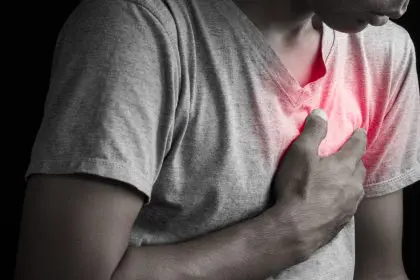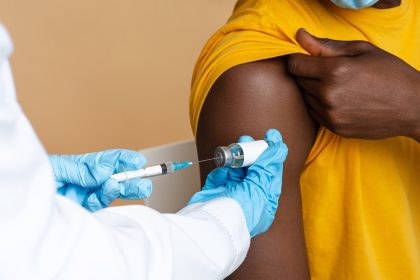Living with a peanut allergy means navigating a world where a single bite could turn deadly. For the estimated 1.2 million Americans who face this reality daily, understanding how to respond when symptoms escalate isn’t just helpful — it’s absolutely critical for survival.
The difference between mild discomfort and a medical emergency can happen in minutes, making preparation and quick action your most powerful tools against severe allergic reactions.
Recognizing when things go from bad to dangerous
Early warning signs that demand attention
Most people with peanut allergies know their typical reaction pattern, but symptoms can escalate unpredictably. Initial reactions might start as familiar tingles in your mouth or mild stomach upset, but several red flags signal you’re entering dangerous territory.
Watch for rapid progression of symptoms within 15-30 minutes of exposure. Your throat might feel like it’s closing, breathing becomes labored, or you experience sudden weakness and dizziness. Skin reactions can spread quickly beyond the initial area, and severe nausea or vomiting often accompanies worsening reactions.
The most concerning sign is when multiple body systems react simultaneously — skin, respiratory, digestive, and cardiovascular symptoms appearing together indicate anaphylaxis, which can be fatal without immediate intervention.
Understanding the biphasic response
One of the most dangerous aspects of severe allergic reactions is the biphasic response, where symptoms seem to resolve completely before returning hours later, sometimes even more severely. This delayed second wave affects approximately 20% of people experiencing anaphylaxis, making continued vigilance essential even after apparent recovery.
Your emergency action blueprint
Step 1: Deploy epinephrine immediately
When symptoms worsen beyond your normal reaction, don’t hesitate to use your epinephrine auto-injector. Many people delay using their EpiPen hoping symptoms will improve on their own, but this hesitation can prove fatal. Epinephrine works best when administered early in the reaction process.
Remove the safety cap, hold the injector firmly against your outer thigh, and press down hard until you hear the click. Hold for 10 seconds, then remove. The medication should begin working within minutes, but this is just the first step in your emergency response.
Step 2: Call 911 without delay
Even if epinephrine appears to resolve your symptoms, emergency medical care remains absolutely necessary. Emergency responders need to know you’ve used epinephrine and may need additional treatment. Paramedics can administer additional medications and monitor you for the biphasic response during transport.
When calling, clearly state you’re experiencing anaphylaxis from a peanut allergy and have used epinephrine. This information helps dispatch send the appropriate level of emergency response.
Step 3: Position yourself for optimal breathing
While waiting for help, positioning matters significantly. If you’re experiencing breathing difficulties, sitting upright often provides the best airflow. However, if you feel faint or your blood pressure drops, lying down with elevated legs can help maintain blood flow to vital organs.
Avoid lying completely flat if you’re having trouble breathing, as this can make respiratory symptoms worse.
Step 4: Prepare for a second dose
If symptoms don’t improve within 5-15 minutes or begin returning, you may need a second epinephrine injection. Most allergists recommend carrying two auto-injectors for this reason. Don’t wait for paramedics if you have a second injector available and symptoms persist or worsen.
Step 5: Avoid common mistakes
During a severe reaction, well-meaning helpers might offer water or try to induce vomiting, but both can be dangerous. Swallowing becomes difficult during throat swelling, creating a choking risk. Similarly, antihistamines like Benadryl won’t stop anaphylaxis, though they may be helpful as supplementary treatment after epinephrine.
Hospital care and recovery protocols
Emergency department priorities
Emergency room staff will likely administer additional treatments beyond epinephrine, including corticosteroids to reduce inflammation and H1 and H2 antihistamines to block histamine responses. IV fluids help stabilize blood pressure, while bronchodilators can ease breathing difficulties.
Most hospitals observe patients for 4-6 hours after anaphylaxis to monitor for biphasic reactions. Some severe cases may require overnight observation, particularly if symptoms were slow to respond to initial treatment.
Post-reaction medical follow-up
Schedule an appointment with your allergist within days of a severe reaction. This visit serves multiple purposes: reviewing what triggered the reaction, updating your emergency action plan, and potentially adjusting your medication regimen.
Your allergist might recommend additional testing to identify cross-reactive foods or environmental triggers that could complicate future reactions.
Building your long-term defense strategy
Creating safe environments
Successful peanut allergy management requires transforming your daily environment into a safe zone. This means establishing peanut-free zones in your home, workplace, and frequently visited locations. Work with family members, colleagues, and friends to understand cross-contamination risks and implement protective protocols.
Restaurant dining requires careful communication with staff about preparation methods and ingredient sourcing. Many establishments now provide detailed allergen information, but verification remains your responsibility.
Emergency preparedness beyond medication
Beyond carrying epinephrine, comprehensive preparedness includes medical identification jewelry, emergency contact information, and ensuring key people in your life know how to recognize and respond to severe reactions.
Consider creating emergency action cards with step-by-step instructions for family members, coworkers, and babysitters. Include photos of your epinephrine auto-injector and clear directions for use.
Managing the psychological impact
Living with severe food allergies creates ongoing stress that can significantly impact mental health. The constant vigilance required for safety can lead to anxiety, social isolation, and reduced quality of life.
Professional counseling, particularly cognitive-behavioral therapy, can help develop coping strategies for allergy-related anxiety. Support groups, both online and in-person, provide valuable connections with others who understand the unique challenges of severe food allergies.
Taking control of your safety
Severe peanut allergies demand respect, preparation, and quick action when symptoms escalate. By understanding warning signs, maintaining emergency supplies, and building strong support networks, you can navigate this challenge while maintaining an active, fulfilling life.
Remember that epinephrine isn’t just a last resort — it’s your first line of defense against a potentially fatal reaction. When in doubt, use it. The risks of using epinephrine unnecessarily are minimal compared to the potentially fatal consequences of delayed treatment.
Your allergy doesn’t define you, but your preparedness and response to it can save your life.

















